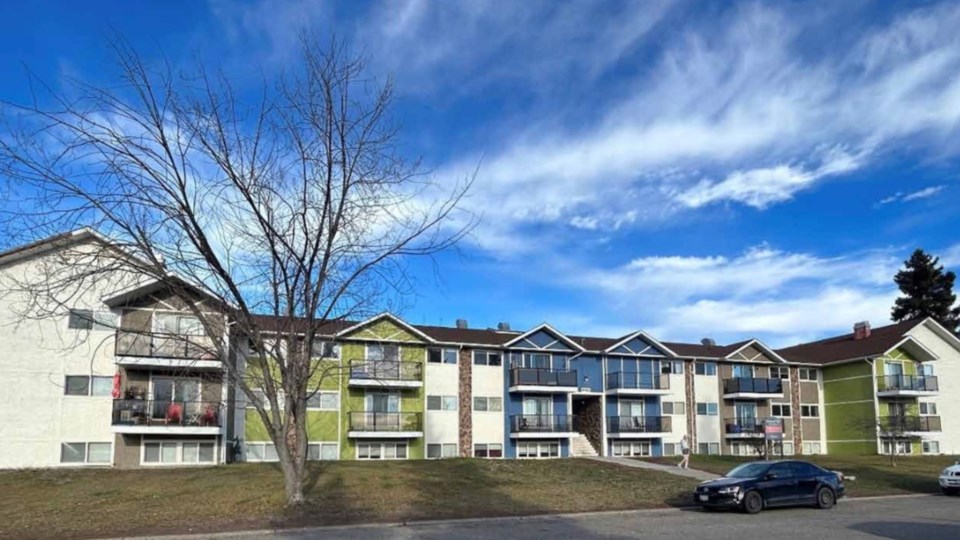Recent deals for purpose-built rental buildings in Prince George point to the opportunities for multi-family investors in secondary markets.
“Yields make sense in Prince George,” said Peter Seed, vice-president, investment, with NAI Commercial. “With a year or two of someone sharp buying buildings, he improves the performance and its capital value significantly.”
Seed sold a 45-unit multi-family property at 4280 Quentin Avenue in March for $6.25 million. Built in 1975, the three-storey structure features renovated suites and sits on 1.47 acres. Known as Parkview Place under the previous owners, Northview Residential REIT, the new owner intends to rename the asset Georgie Place.
Rents for the property were in the range of $1,000 a month, but through rebranding and upgrades to the property, the private investor who acquired it stands to realize significant improvements on rents.
“Those [monthly rents] over four or five years become $1,400, $1,500, by rebranding the building, doing all the lipstick like gardening, internal hallway lighting, staircases, new roofs,” he said. “People respond to that.”
Situated within a five-minute drive of the University of Northern British Columbia as well as key shopping areas, the property is also well positioned to serve the city’s growing student base as well as long-term residents.
Prince George’s current estimated population is 78,943, while UNBC enrolment is approaching 4,000.
Student demand has contributed to a declining rental vacancy rate, with Canada Mortgage Housing Corp. pegging them at 2.7 per cent last fall. Rents average $1,172 per month.
Prince George Mayor Simon Yu said some significant housing programs are on the horizon, including projects at the university and others developed by BC Housing.
Bill 44, which required local governments to update their zoning regulations to permit small-scale multi-unit housing among other changes, is also having an impact on supply.
“We are encouraged with Bill 44 to look at four-plexes and six-plexes. There are other ways for people to invest in housing now. Besides the apartments, we are going to start having more row houses,” Yu said.
Some of the major economic drivers such as the miningand energy sectors are also contributing to demand for housing.
“Prince George is the supply centre for northern B.C. as mining activity picks up,” Yu said. “We have not seen a significant drop yet for the housing demand. In the years ahead, we as a city are still going to be on the upswing in terms of housing starts and housing needs.”
This will continue despite uncertainty around lumber exports, which are facing headwinds from U.S. tariffs.
“Investors are looking at sawmills and pulp mills and whether the situation stabilizes this summer,” Yu said. “[If so] the investor will have a little bit more confidence to know that one of our key industries, the lumber industry, has been stabilized.”
Seed, for his part, is looking past the headwinds to the long-term demand for housing.
“The market is improving monthly, quarterly and annually as we get into 2026,” Seed said. “In fact, investors are looking to contract in for 2025 for 2026 because of the ever-improving market, whereas in the primary markets the yields are fairly static.”
He pointed to the dynamic in Metro Vancouver, now extending further east into the Fraser Valley.
“You’re buying things for a nominal rate of return and, in fact, you’re relying on capital appreciation,” he said.
This isn’t the case in secondary markets such as Prince George, where rents remain in line with local incomes, and property values are also lower, resulting in better returns on investment.
Rent increases are also manageable, for the most part.
“Where there is movement in rents, you’re still not extorting people,” he said. “It’s still substantially affordable.”



